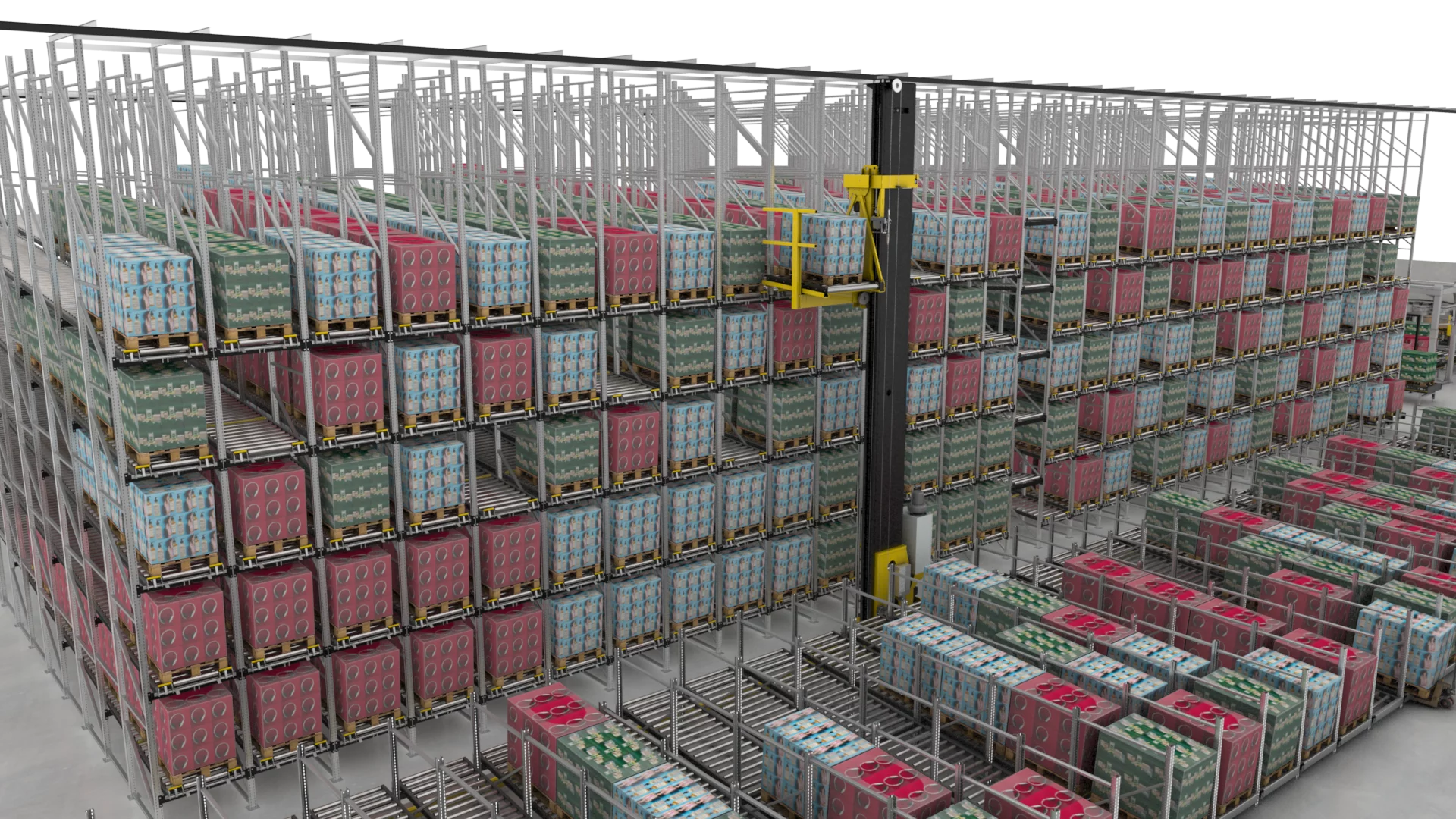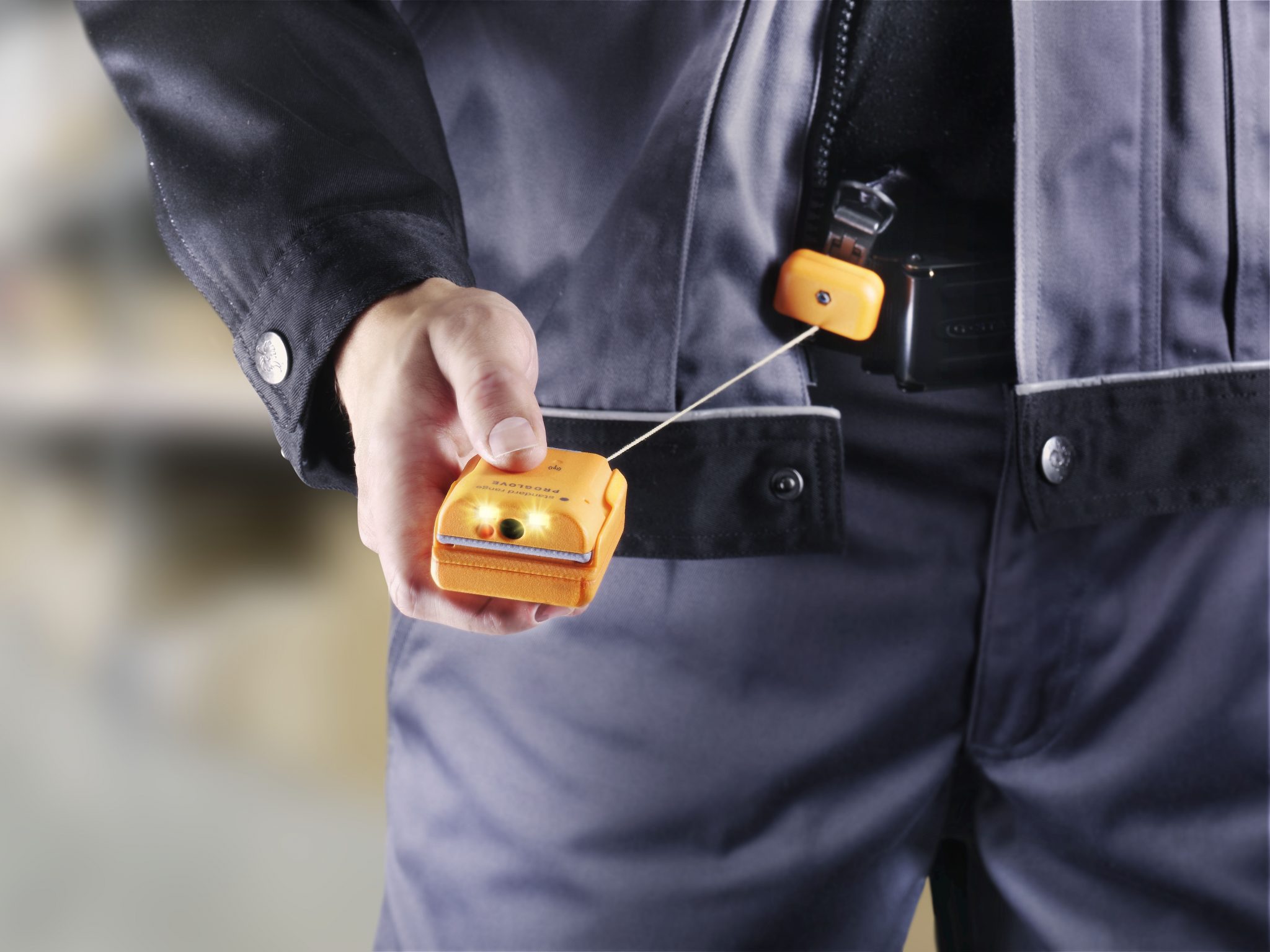Innovative solutions for the fully automatic handling of pallets: With a new stacker crane for dynamic storage and a transfer car, which enable the fast and safe storage and retrieval of up to 100 pallets per hour, Interroll is expanding its Modular Pallet Conveyor Platform (MPP), a flexible modular system for driven pallet conveying. The new products allow users—in seamless interaction with the proven Interroll Pallet Flow dynamic storage system—to implement extremely compact, robust and efficient pallet handling automation solutions that excel with very low planning and installation costs and high energy efficiency.
With the market launch of the stacker crane and the transfer car, companies for the first time have the opportunity to implement a continuous material flow with pallets—for example between incoming and outgoing goods or between warehouse, production and order picking—on the basis of a technology offering from a single source. This means that system integrators and plant constructors can expand their business horizon with cost-effective plug-and-play pallet conveyor solutions, which can also be planned in a very simple and user-friendly way using Interroll’s Layouter tool.
“With our compact automation platform, users can replace cost- and accident-prone forklift truck traffic and take advantage of new high-throughput pallet applications through the flexible combination of our modular conveyor and flow storage systems,” explains Michael Kuhn, Managing Director of Interroll Kronau GmbH. “For example, flow storage systems can now be designed as highly dynamic dispatch warehouses and the space required for automated route preparation can be significantly reduced.”
Stacker crane for high pallet throughput
The heart of a highly dynamic pallet handling system is the new stacker crane, which has been perfectly designed for connection to the Pallet Flow storage system. The lightweight construction and integrated energy recovery make the system extremely energy-efficient. The overall height is 12 metres, the horizontal travel speed is 3 metres per second and the lifting speed is 0.8 metres per second. At the initial launch, the system is designed to transport Euro pallets with a maximum weight of 800 kilograms. Adaptions for the use of additional pallet formats will be carried out step by step over the next few months. The system is equipped with an integrated lifting speed control and powerful braking systems. Due to the modular and preassembled design of the steel construction, the stacker crane requires low maintenance and is easy to deliver and install.
Transfer car for a fast and smooth handover
Like the storage and retrieval machine, the MPP is supplemented by a new transfer car for fast pallet conveying. Up to 5 meters per second can be achieved, allowing even greater distances to be bridged quickly and reliably, for example in the area of route preparation or the connection between warehouse and production. The transfer car weighs just 275 kilograms and, thanks to the intelligent drive concept, does not require a control cabinet for the electrical connection.
As new components of the MPP, the stacker crane and the transfer car can be conveniently planned using Interroll’s Layouter tool and combined to form a complete solution.
Integrated control concept: one solution for all requirements
The Interroll Pallet Control PC 6000 is now responsible for controlling the pallet conveyor modules. The control is easy to attach to the side profile and put into operation. In combination with the Interroll MultiControl, the Pallet Control PC 6000 enables the control of 400-volt and 24/48-volt drives, offering an integrated control concept for the entire pallet conveyor system. For every requirement, be it the transport of heavy or light pallets, Interroll offers a uniform solution for different operating modes. This makes it possible to operate sections of the line autonomously, transport with zero pressure accumulation (ZPA) or to operate continuously. Depending on requirements, the systems can be controlled locally or centrally via programmable logic controller (PLC).
The new integrated control concept consisting of proven controls considerably reduces the planning and installation effort. Perfectly matched interfaces and simple cabling enable the pallet conveyor system to be put into operation quickly.







